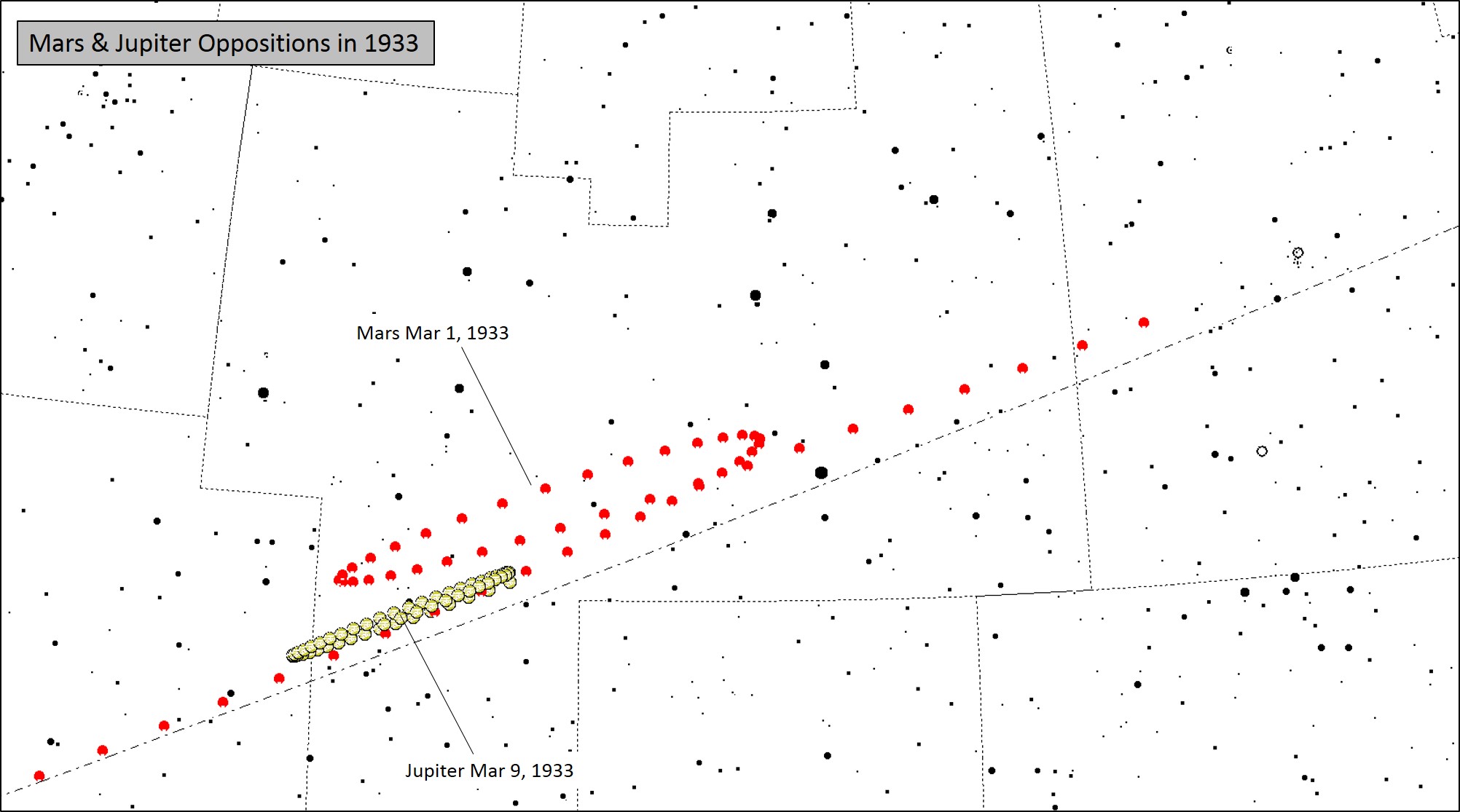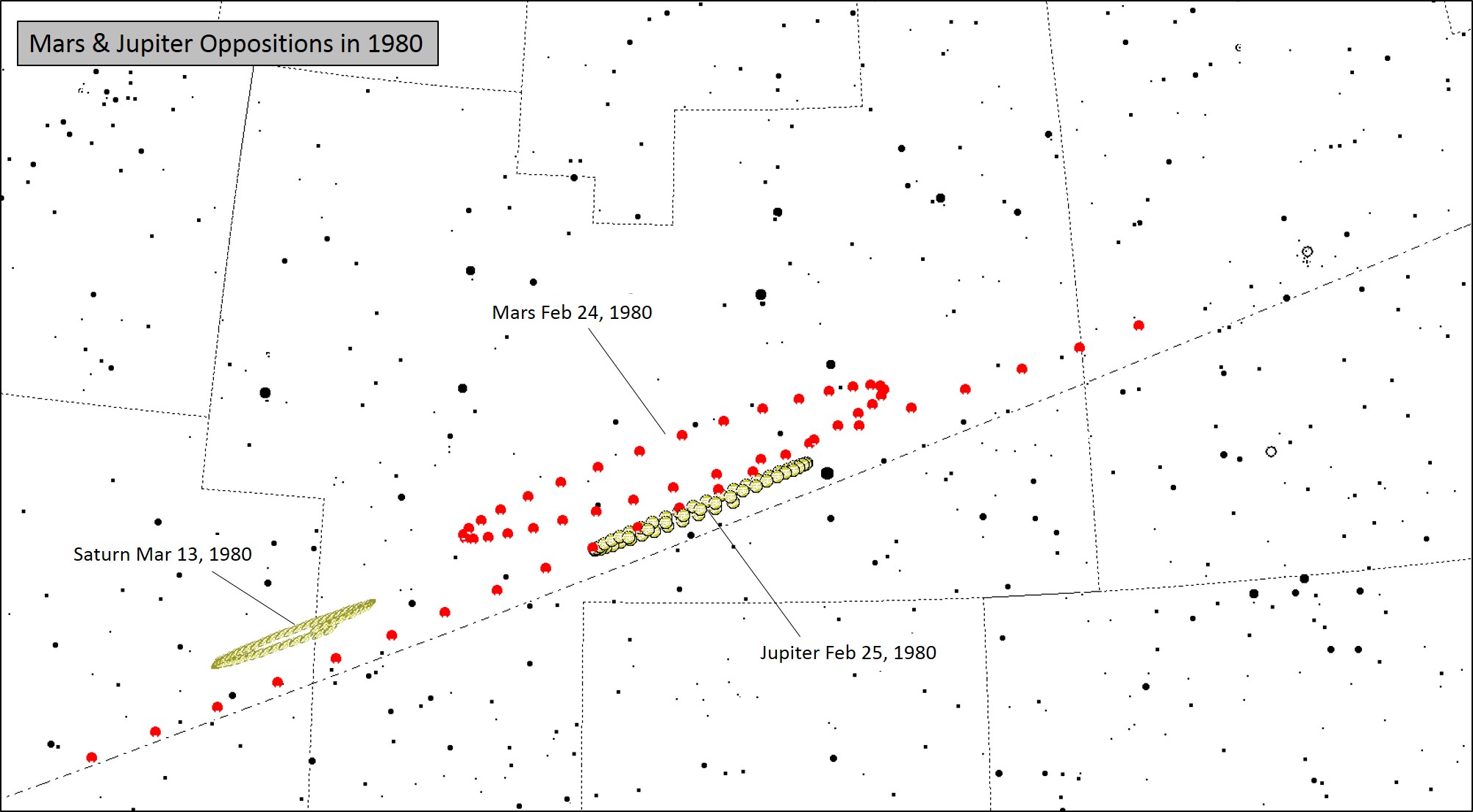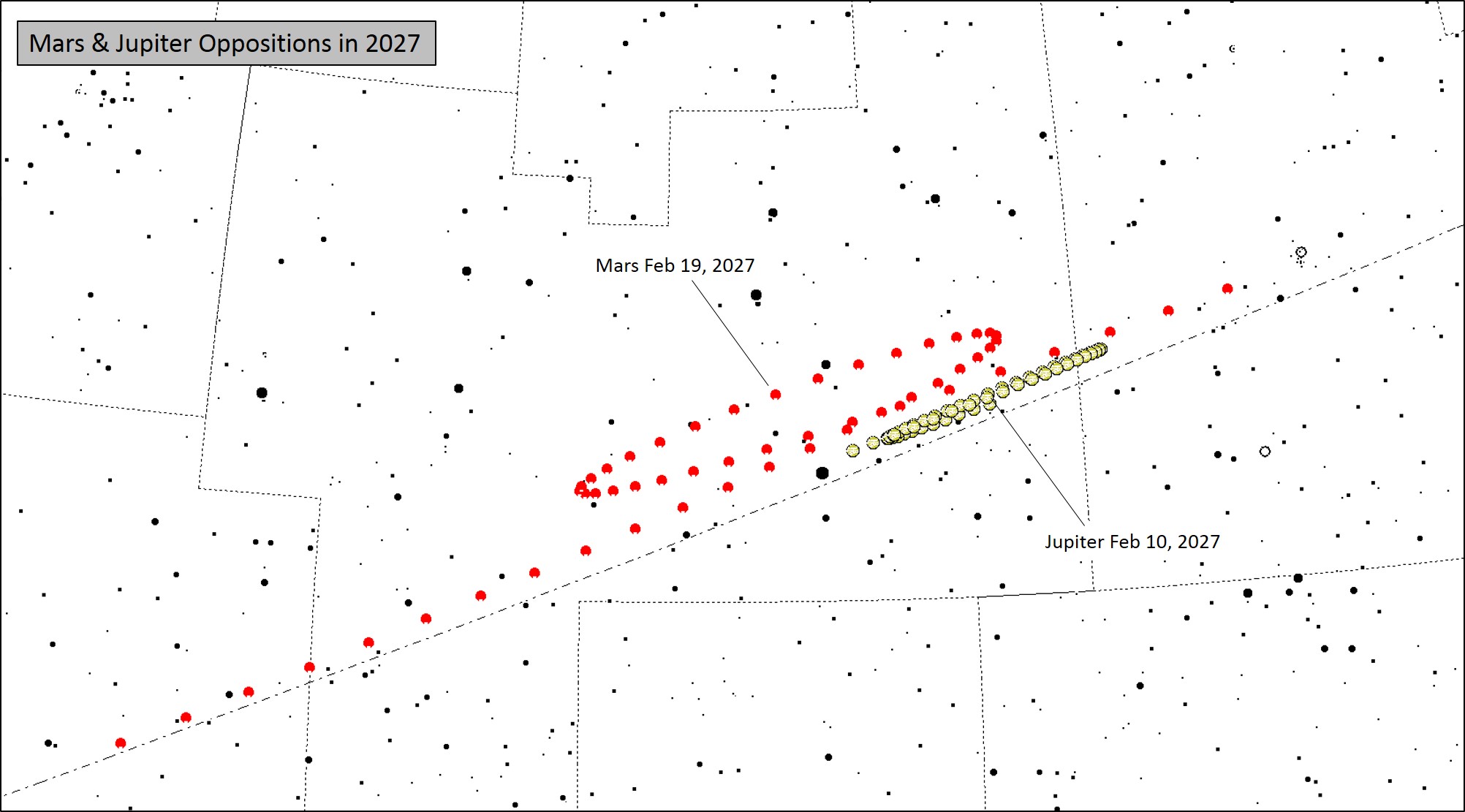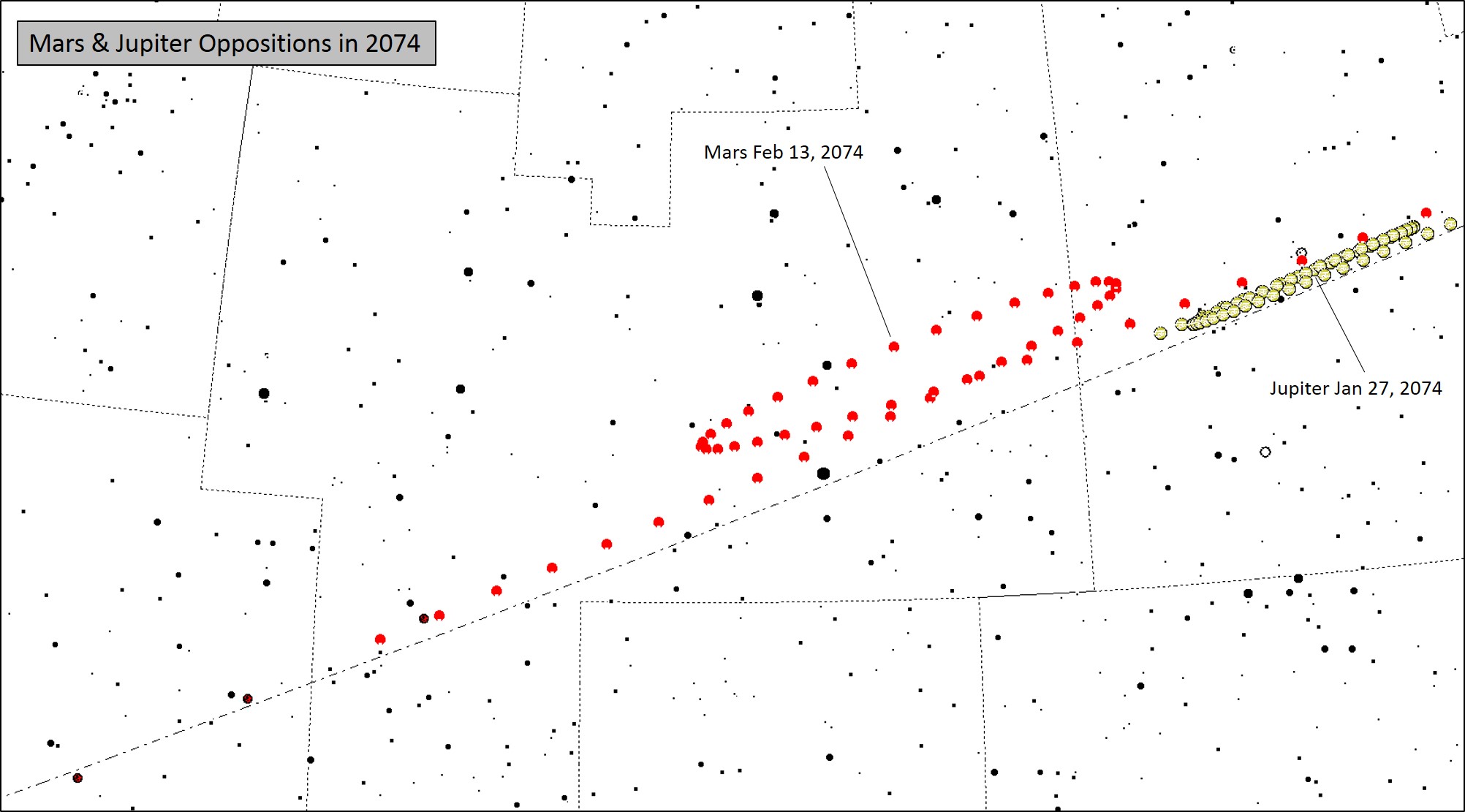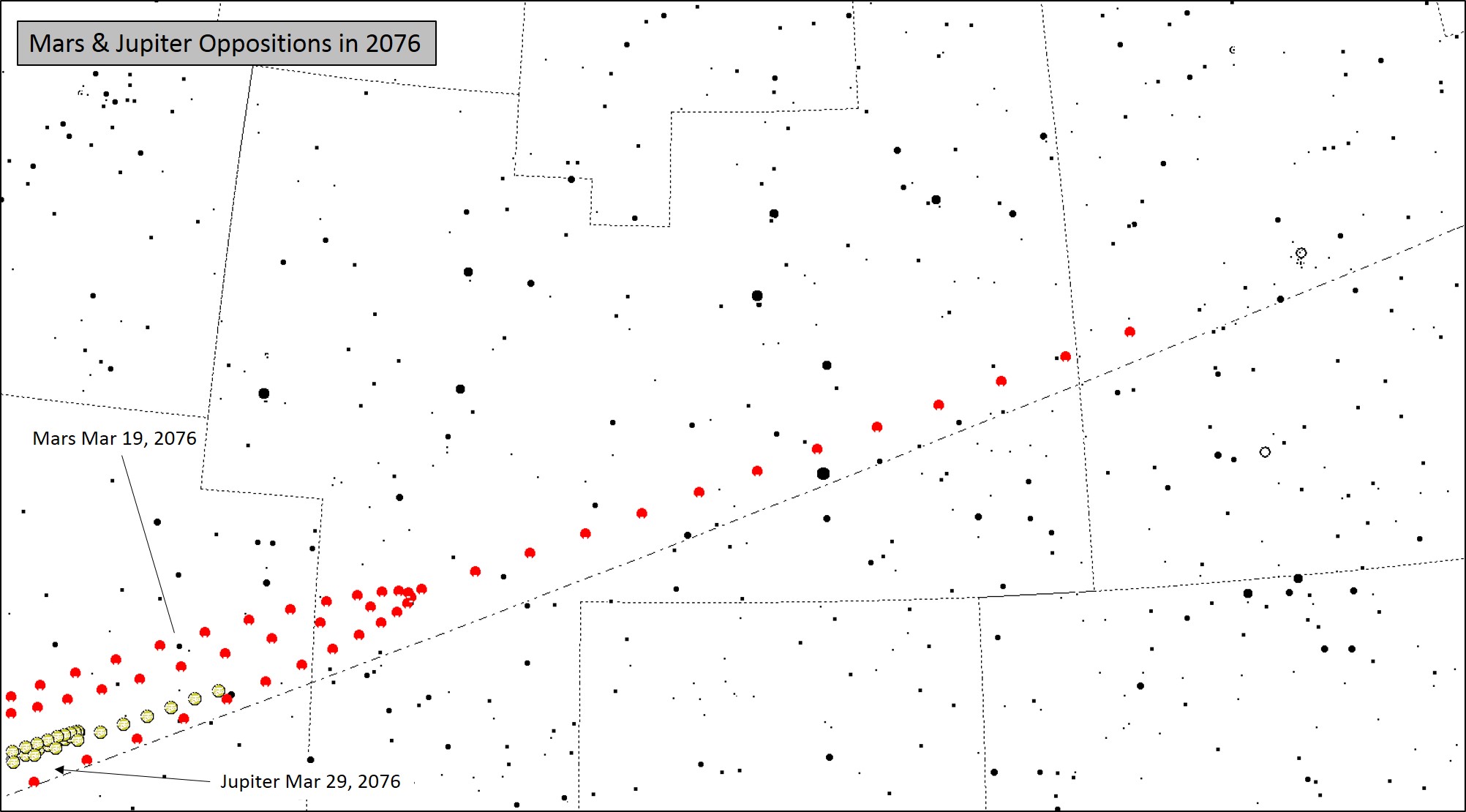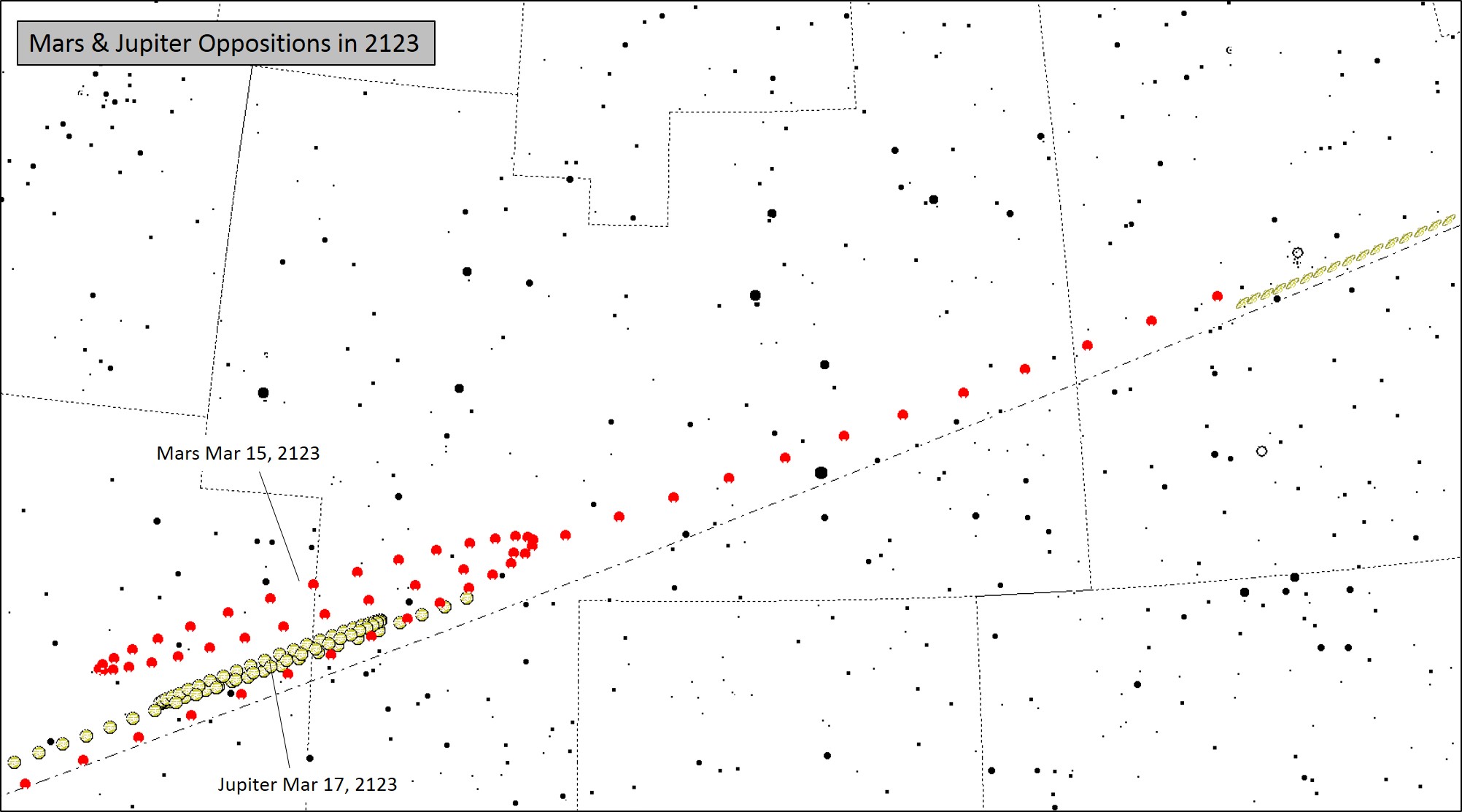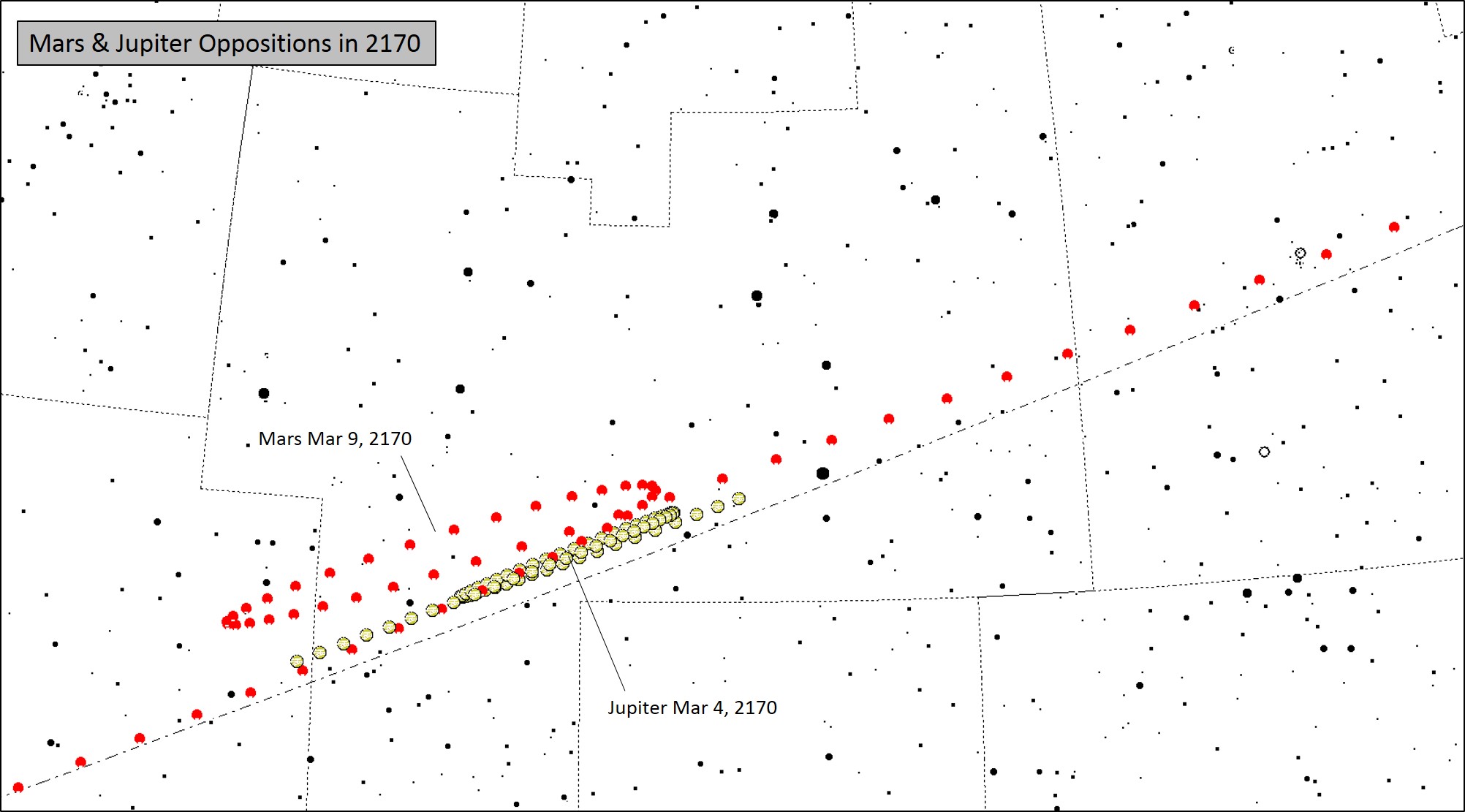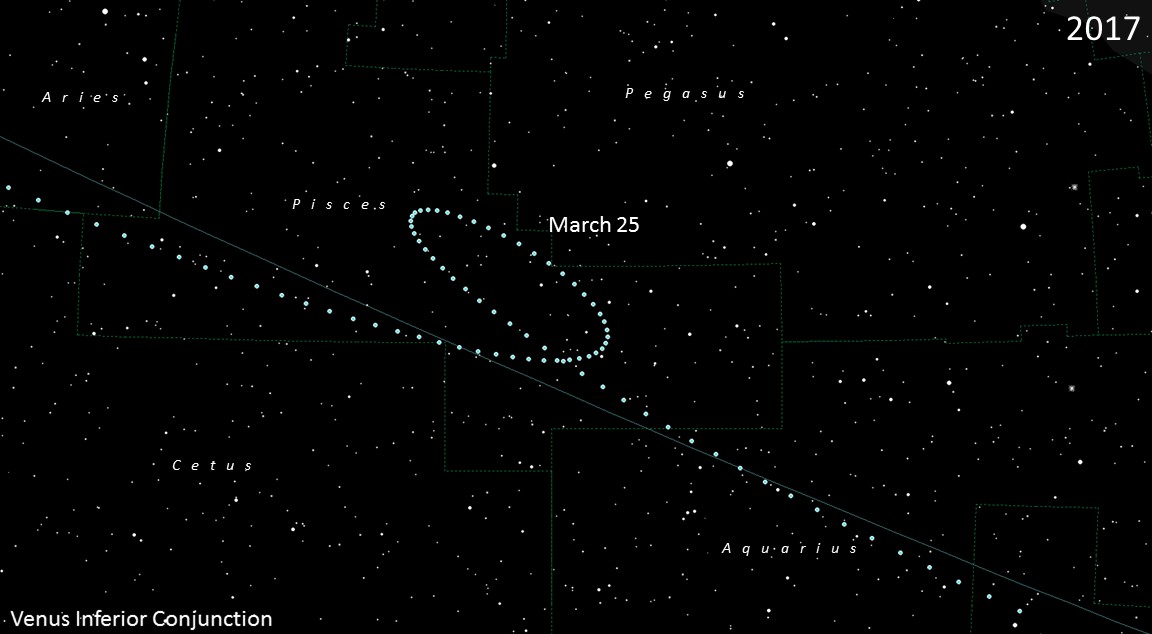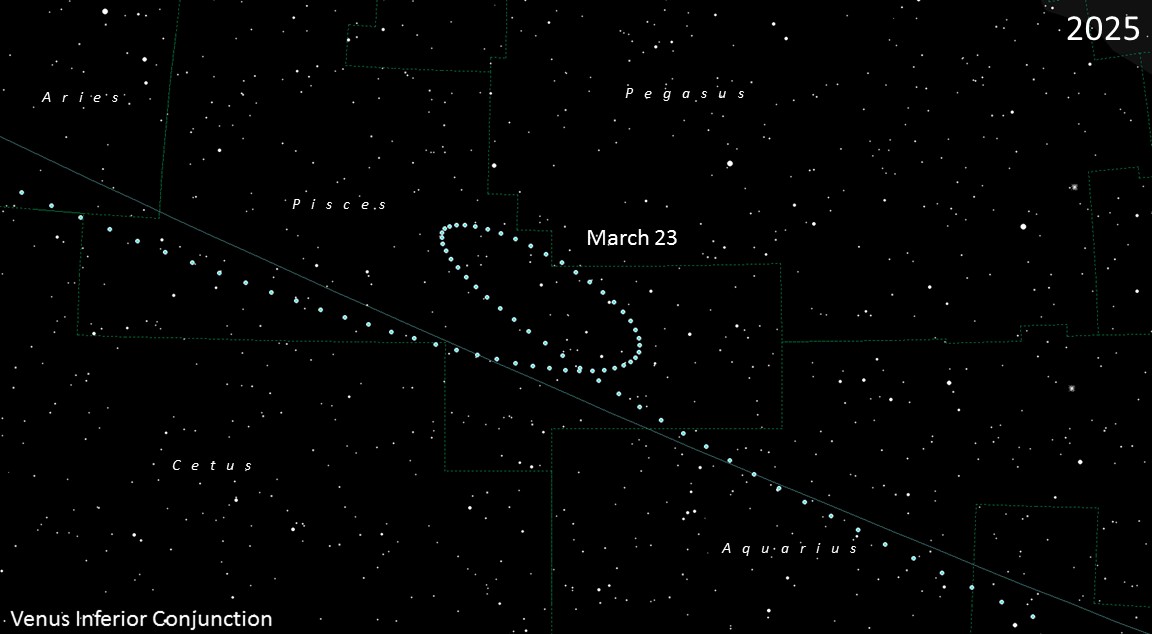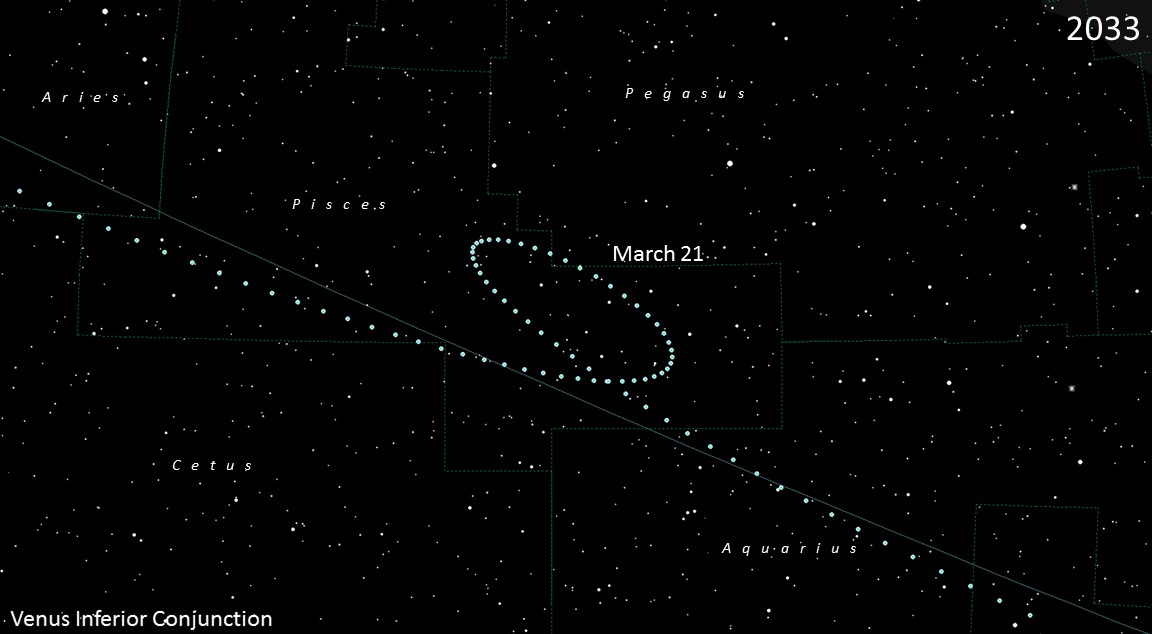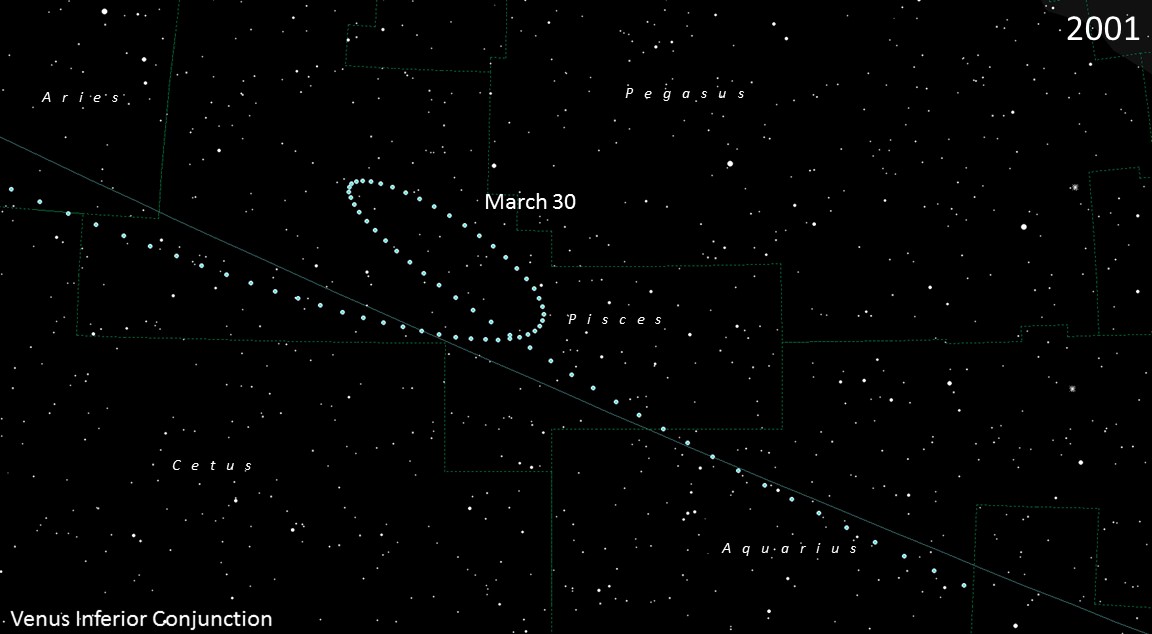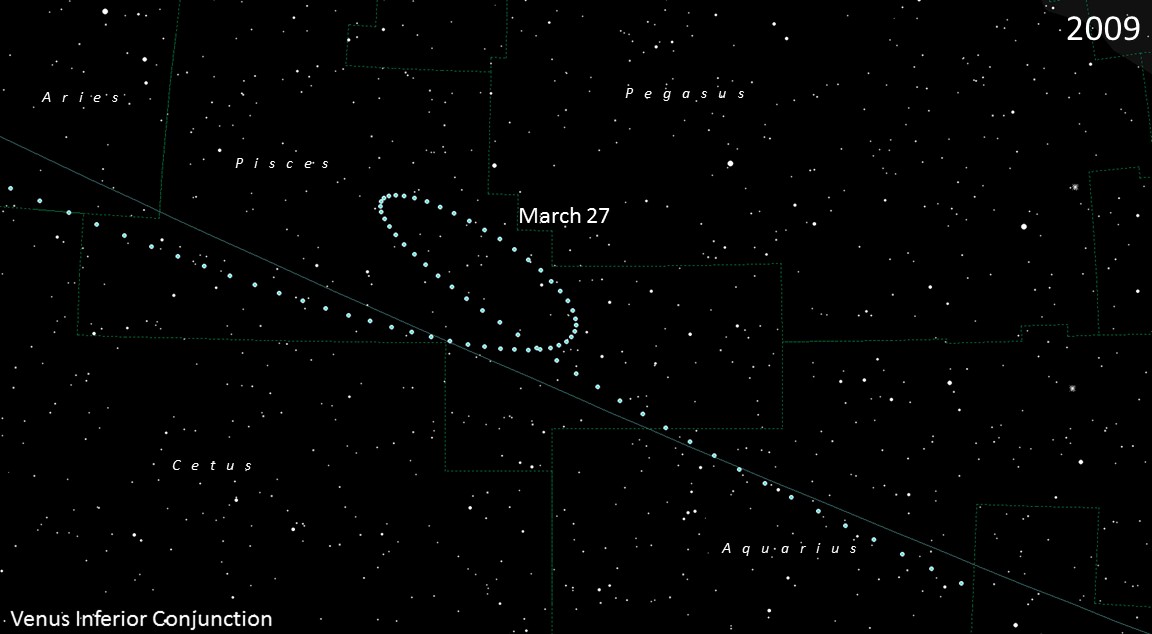Charts of Interesting Planetary Alignments
| This page is a compendium of charts showing interesting planetary alignments and patterns over time, in particular how repeating apparitions of a planet or groups of planets change from one instance to another. These gradual changes in time are fascinating to consider and offer insight into phenomena such as the cycle of Venus transits, or triple conjunctions among planets, etc. |
| Mars and Jupiter Mutual Oppositions | One of the most fascinating sky scenes for me is when two outer planets come to opposition at nearly the same time; the only case where they can both be very bright is Mars and Jupiter. So how often do they arrive at opposition at nearly the same point in space and time? Not very often! This occurred in 1980, and will occur again in 2027, and again in 2074, so we can see that the intervals between these three events is 47 years, and in each case, the mutual conjunction occurs in the Leo direction. According to my planetarium software, Orion's The Sky®, over a period of almost 1,000 years, most of the near-simultaneous Mars-Jupiter oppositions occur in the Leo direction, but in the epoch about 700 years from now, several of these near-simultaneous oppositions will occur in the Pisces direction. Those events should be spectacular for anyone fortunate enough to observe them, as Mars and Jupiter will both be near peak brightness, at magnitude -2.5 or brighter! |
| 1933 | 1933 + 47 = 1980 | 1980 + 47 = 2027 | 2027 + 47 = 2074 |
| 2076 | 2076 + 47 = 2123 | 2123 + 47 = 2170 | BONUS: Fantasy Planetary Scene! Football fans aren't the only ones who can indulge in fantasy games. How about the best Mars and Jupiter circumstance you can imagine? Try the mutual opposition in Pisces in the year 2746 A.D.! |
| Venus Inferior Conjunctions | It is well known that Venus is locked in an
orbital resonance
with the Earth, making 13 orbits of the Sun in almost the exact same time that Earth makes 8 orbits, of
course therefore meaning 8 years. During those 8 years, we see Venus come to inferior conjunction,
meaning it passes between the Earth and the Sun,
5 times. In our epoch, these times are in late March (Pisces direction), August (Virgo direction),
early January (Sagittarius direction), early June (Taurus direction, the site of the last two transits in
2004 and 2012), and finally in late October (in the Libra direction). We know that the cycle of these
inferior conjunctions, and therefore all of its apparitions, repeat almost exactly from one 8 year period
to another. But they don't repeat exactly, otherwise the transit seasons would not migrate from one
time being in June to the next time, over 100 years later, being in December. How many repetitions
of one apparation do we need to look at in order to see how it progresses over a longer period of time?
Let's look at 18 iterations of a Venus March inferior conjunction (the one in the Pisces direction).
I like this one because Venus is at its highest point above the ecliptic during this time, therefore easiest
to see with binoculars or telescope even on the date of inferior conjunction.
In the following diagrams, the dots showing Venus' position are at an interval of two days, e.g., one on Feb 25 and the next on Feb 27. |
|
|
From the table showing the elongation data, as well as from the shape of the paths Venus takes at each inferior conjunction, we can see that the event that most closely coincides with Venus also being at its greatest latitude north of the ecliptic is the 2081 inferior conjunction. The retrograde loop is the most symmetrical and the latitude is the greatest at that event. For observers in the eastern United States, since it occurs in early March, the chances that the weather will be nice for them are greater :) I won't see it, since I would be 118 years old then, but maybe my as-yet-unborn grandchild will have a great view.
